While decandling is a great technique for refining red and black pine bonsai, knowing when to decandle is just as important as knowing when not to decandle.
When is decandling not appropriate for red and black pine bonsai?
- When the goal of training is to increase the size of the trunk. Let these trees grow until the trunk reaches the desired size before decandling.
- When a tree is unhealthy. Decandling is stressful for pines – only decandle trees that are healthy, vigorous and insect-free.
- When a tree is weak or under-fed. If otherwise healthy pine bonsai have not received adequate fertilizer in spring or have been weakened from stresses like repotting or inclement weather, take a break this year and decandle the following year when the tree is stronger.
Feel free to decandle when your red or black pine bonsai are in refinement phase, are healthy, well-fed, and growing in soil with good drainage. Following are some examples of when to decandle and when to hold off.

The trunk needs to develop – do not decandle (3 years old)
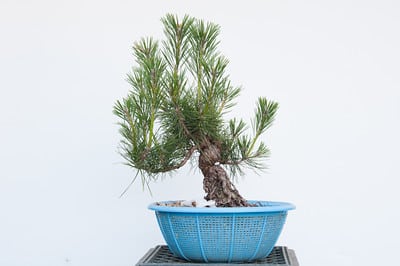
The trunk has reached the desired size – start decandling (9 years old)
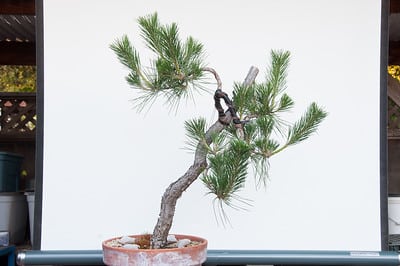
The tree is entering refinement phase – decandle (15-20 years old)
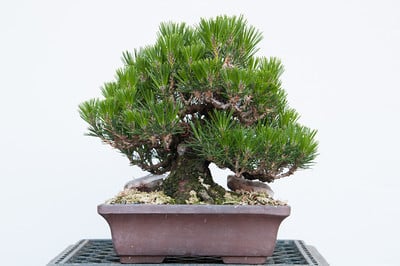
The tree is in refinement phase – decandle (19 years old)
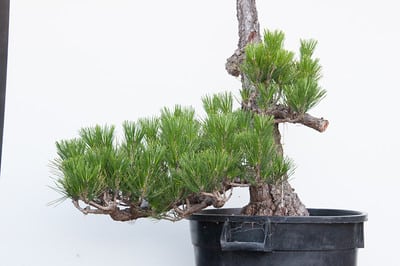
The tree is entering refinement phase – decandle (20-25 years old)
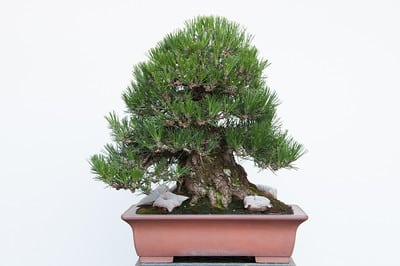
The tree is less vigorous than normal after repotting – do not decandle (35-40 years old)
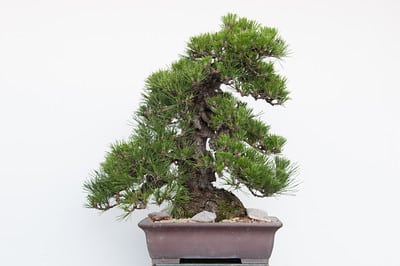
The cork bark black pine is less vigorous than normal after repotting – do not decandle (40-50+ years old)
Subscribe to Bonsai Tonight
New Posts Delivered Every Tuesday and Friday
Mac says
Jonas, You have done it again! Thank you. When are you going to write the book? You are laying out pine care in a very organized and clear way.
I haven’t seen this kind of information put fourth so clearly before. Thank You!
Paul Parisi says
Question. I have 11 JBP 3 to five years old. All the trunks need to thicken. Should they be fertilized year round and allowed to grow unrestricted?????
Jonas Dupuich says
Thanks all for the comments!
Paul, good question – I don’t know that I have a good answer. For many years I fed my young pines heavily from February through November but just this last year I learned there may be a reason to let pines develop more slowly at the start and accelerate growth once the basic trunk line has been established. Until I find out more about this technique I’m feeding my young pines moderately and using more fertilizer for somewhat older trees. I’ll say more about this when I learn more – hopefully this coming winter.
Patrick says
I think this is more important than the previous “why to decandle”. I see people decandling seedlings, and just at a club meeting this weekend i had an older member suggesting i decandle all my developing material. I find JBP enormously simple and responsive to develop, I just wish everyone would read this blog, so they stopped performing ill-advised techniques at the wrong time! Learn the technical side of JBP and the rest simply follows.
Chris says
Thanks Jonas, exactly what I was asking you about!
stan says
Great post Jonas.
Had the last two pines you featured (the 35 year old and the cork bark) not been re-potted this year, would you have de-candled them? Or, would you still consider the candles too small/weak?
Thank you.
Jonas Dupuich says
Hi Stan – I’d only decandle these trees if they were stronger. Although I happen to know they went through significant repottings this year, the decision not to decandle was based on the vigor of the new shoots, not the fact that they were repotted. Thanks for the note!
Steve Ohman says
Jonas-
Thanks for the reply.
Since I’ve already de-candled shoots, as, if not slightly less vigorous than those in the photos, would
you suggest fertilizing this summer to offset this possible “mistake” . If so, at what strength? 20-20-20, 5-5-5??
Don’t want to lose a tree trying to shorten needles.
Btw, didn’t mean to have you answer my question privately without sharing with your other followers. I’m fairly new to your blog (which is great )and
may not have set my preferences correctly. Please feel fee to add my question to the comments if you think it worthwhile.
Just so you know I tried to sign in to comment and your site would not accept my e-mail address or username. I’ve been confirmed by “W” as a follower for about a month, so I’m not sure why I wasn’t able to sign in.
Thanks again,
Steve
screen name Stan
Jonas Dupuich says
Hi Steve – no problem about decandling prematurely. Feeding the tree continuously is a good way to maintain vigor. I wouldn’t feed heavily right after decandling, but I’d make sure the tree has a continuous supply of food. Nitrogen is the key ingredient the tree needs at this point, so almost any fertilizer will do. I tend to prefer organics as they are mild – either fish emulsion or cottonseed meal are easy options.
Sorry about any account hassles – do let me know if you continue to have any troubles. -Jonas
Juan says
Hola Jonas,
Very nice, I believe that a thorough understanding of the biology and the intended goals of decandling give folks the best chance for success. Keep it going, juan
Mac says
Jonas,
How does one balance not decandling with not wanting a limb to extend longer.
As I understand if you don’t decandle this year then you may have a branch that is, for this example, 2″ longer and the next opportunity to decandle, two years out, will put the new branching at the end of this years 2″ growth.
Understanding that the new growth that results from decandling will occur at the base of the second years candle extension. This leaving the ramification occurring 2″ out on a particular branch.
I hope I have explained the question sufficiently for you to consider.
Jonas Dupuich says
See additional notes about decendling and some great advice about Scots pine from Michael Hagedorn at Crataegus.com
http://crataegus.com/2013/06/03/time-to-decandle-your-black-pines/